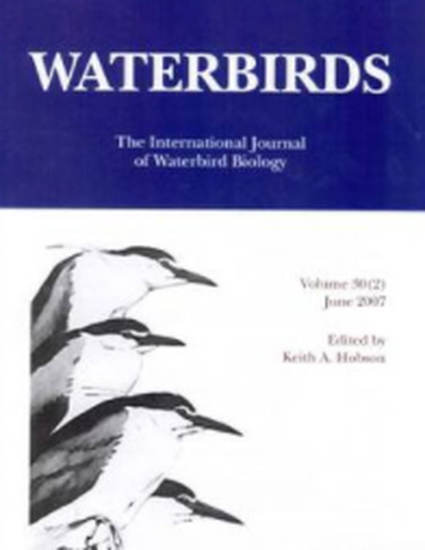
Article
The Status of Colonial Nesting Wading Bird Populations Within the Chesapeake Bay and Atlantic Barrier Island-Lagoon System
Waterbirds
(2007)
Abstract
Colonially nesting wading birds (herons, egrets, and ibis) are a highly visible, biologically significant component of the mid-Atlantic coastal avifauna. Populations of these species were decimated by extensive market hunting in the late nineteenth century, recovered, and additional species colonized the region. Herein, we summarize changes in species, numbers of breeding pairs, and colony sites for ten species of wading birds surveyed four times over a 26-year period (1977 to 2003) within the Chesapeake Bay and Atlantic coastal barrier island region. Over the period of surveys, wading bird breeding colonies increased 246% (to 537) and numbers of breeding pairs increased 67% (to 26,589). Expansion among Great Blue Herons (Ardea herodias), Great Egrets (Ardea alba), Yellow-Crowned Night-Herons (Nyctanassa violacea) and Glossy Ibis (Plegadis falcinellus), primarily accounted for the dramatic increase, while declines were recorded for Snowy Egrets (Egretta thula), Cattle Egrets (Bubulcus ibis) and Black-crowned Night-Herons (Nycticorax nycticorax). Rapid loss of breeding wading birds along the Atlantic coastal lagoon system during the last decade is of particular conservation concern.
Disciplines
Publication Date
December, 2007
DOI
https://doi.org/10.1675/1524-4695(2007)030[0082:TSOCNW]2.0.CO;2
Citation Information
Bill Williams, David F. Brinker and Bryan Watts. "The Status of Colonial Nesting Wading Bird Populations Within the Chesapeake Bay and Atlantic Barrier Island-Lagoon System" Waterbirds Vol. 30 Iss. SP1 (2007) p. 82 - 92 Available at: http://works.bepress.com/bryan-watts/270/
